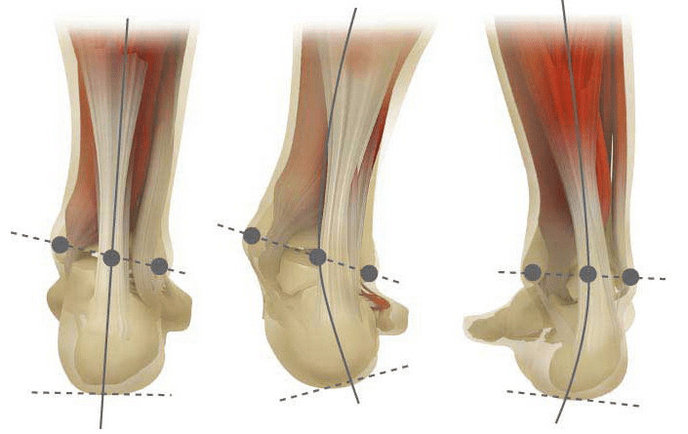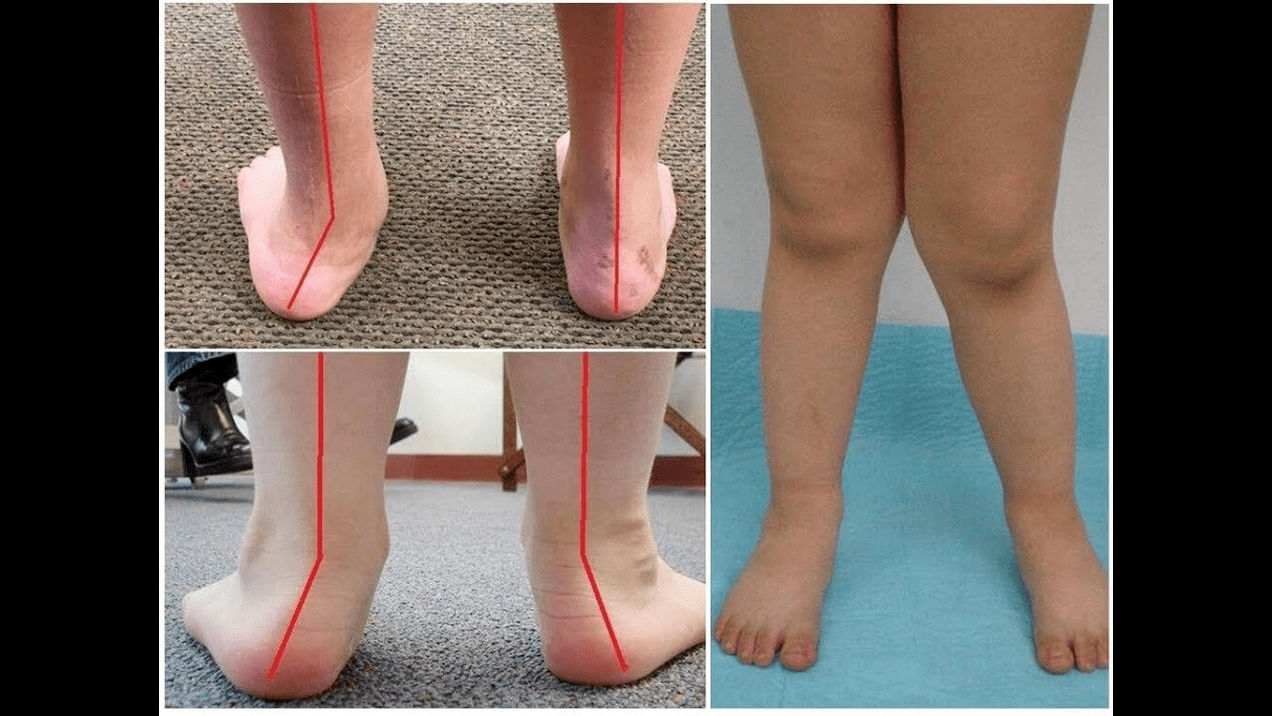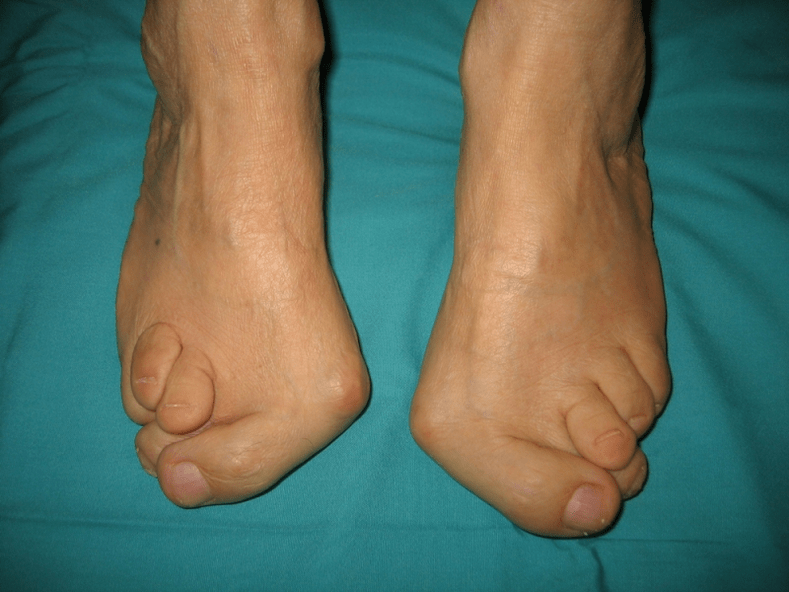Deformation of the leg valgus is most often congenital. However, in some cases - with paralysis, traumatic lesions - can already appear in the mature period of life. The main symptoms of the pathology are pain in the area of the legs and lower leg muscles, a noticeable violation of the shape of the feet, as well as a change in walking. Diagnosis of the disease is performed using a clinical examination, X -Ray, electromography, etc. Treatment includes conservative and surgical methods. However, proper effectiveness is only observed in reconstructive operations.
What is this disease?

Valgus deformity is the bending of the foot, characterized by flattening its longitudinal arch. Typically, the inner edge of the foot is lowered ("point"), and the resulting heel.
A person's foot, due to his location, takes the pressure of the entire mass of the human body. For this reason, it has a special anatomical structure, which allows the displacement, balancing and stabilization of movements. However, an important component for the implementation of these tasks is the exact form of prohibition.
Today, the most important problem of traumatology and orthopedics is to deform the valgus of the foot. The meeting is estimated at 30-58%, where 2/3 of the cases constitute congenital disorders.
Pathology is largely important social because it covers all population age groups, and also helps in bending the spinal column, early development of osteochondrosis and arthrosis of the lower extremities joints.
When you take your feet (if you look at them from behind), a deformation similar to X is formed at the foot level: the ankle is in contact, while the heels are at a distance of 5-6 centimeters from each other.
Most often, the pathology is natural born and is diagnosed in children again in the hospital (or immediately after walking). A similar condition is regulated for up to 5 years, after which (in the absence of proper treatment), a child develops flat feet.
Why is born?
It is believed that the main reason for the appearance of leg valgus deformation is an inadequate function of the posterior tibial muscle or the weakness of the ligamentous apparatus.
Today, other factors are distinguished in the development of pathology:

The development of pathology is also facilitated by incorrectly selected shoes or excessive club correction in childhood.
The rate and stage of the disease
The severity of the pathology (the power of manifestation) is divided by degrees:
Depending on the inclusion of certain structures, the following stages of bending are distinguished:
Symptoms
In the first stage, patients are disturbed by periodic pain after prolonged walks or long vertical loads (standing or sitting standing). As a rule, the pain syndrome intensifies when walking with the properly selected shoes. The next stage of the disease is associated with the appearance of leg curvature: patients in the standing position do not rest on the outer edge of the foot, but with its entire area. A slight change in walking is observed.

In the third stage, the prolongation of the molten bone (significantly lower than the ankle on the inner surface of the ankle) is determined, as well as a strong deviation of the heel outside (the patient stands based on the inner edge of the heel bone). The advanced deformation of the leg valgus is characterized by a pronounced curvature of the foot itself and the ankle joint. Patients complain of severe pain in the lower leg muscles, as well as a significant walking violation: the knees rub against one another, while the right and left legs are located at a distance.
Severe leg bending is often complicated by spinal column deformation (scoliosis with different shoulder and pelvic wings), osteochondrosis (intervertebral disc damage with the formation of a hernia) or arthritis (premature ear of intraarticular leg, and lower leg).
How to diagnose?
The diagnosis of leg curvature consists of:
It can be an additional consultation of a neurologist (with deformities due to spasms or paralysis), an endocrinologist (in the case of diabetes or thyroid/parathyroid gland disorders) and the gynecologist (when the threat). If the leg bending appeared against the background of osteoporosis, densitometry is needed - the study of bone density.

Treatment
Among the main methods of treatment of valgus leg bending, conservative and operational. Do not destroy sore joints with ointments and injections!
Conservative approach
This type of aid is intended to get rid of the symptoms of the disease, but does not eliminate the root cause of the pathology.
The technique includes:
Conservative methods also include physiotherapeutic procedures (ozokerite, paraffin applications, electrophoresis, magnetic effects), massage and a complex of physiotherapy exercises developed for a specific clinical case. Be careful! Today, most experts prefer surgical treatment methods because conservative therapy is ineffective (according to statistics, is useless in 60% of cases).
Surgical intervention
The volume of operation and its type depend on the direct stage of the disease. Thus, the first degree of valgus deformation is treated by the synovectomy (removal of the tendon shell for overall voltage correction) or osteotomy (dissection) of the heel in order to return to anatomically accurate position. In the second phase of the development of the disease, the transplantation of finger tendon curves is used. Such an intervention is usually performed against the backdrop of heel dissection or a ram lobed arthrodesis (surgical immobilization of the fusion between RAM and the scapoid bone).
Grade III curvature requires the arthrodesis of some foot joints immediately: Plus-PA, with five cups and desired RAM. Such three -determinant immobilization is often supplemented by the heel bone dissection. At Phase IV of the pathology, reconstructive surgeries are needed not only on the foot but also on the ankle. In this case, the instability of the ligamentous apparatus is regulated using transplants (from their body or artificial materials). The volume of walking operations itself is the same as the III degree of curvature.
Recovery
Rehabilitation involves walking without support in the operated leg for 2 months. At the same time, the patient should wear a removable gypsum length from 1. 5 to 3 months. Active movements in the operated leg are recommended to begin after 1. 5 months after surgery. By the 3rd month, a complex of strengthening physical education is presented. However, patients are then forbidden to walk with bumps and active sports activities. It is worth noting that it is possible to judge the final result of the operation only six months later.
Preventive

Prevention of stopping valgus of the prohibition includes the following measures:
Preventing the progression of the disease is the use of conservative methods and early reconstruction operations. In this case, physical activity is limited to prevent the destruction and bending of ankle joints. Remember, timely treatment of leg valgus deformation not only improves the quality of life of patients, but also prevents the development of osteochondrosis and arthrosis of the knee or hip joints!























